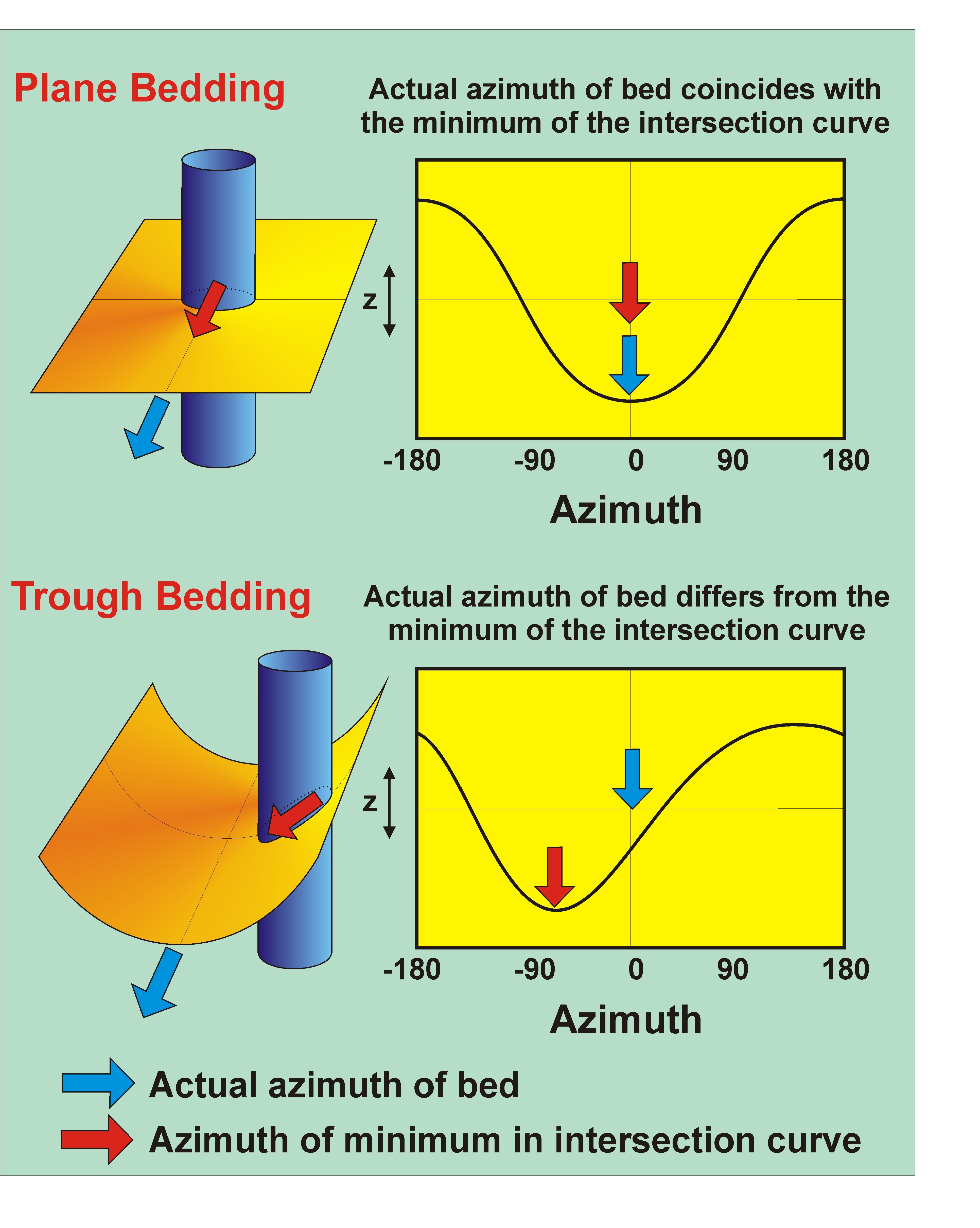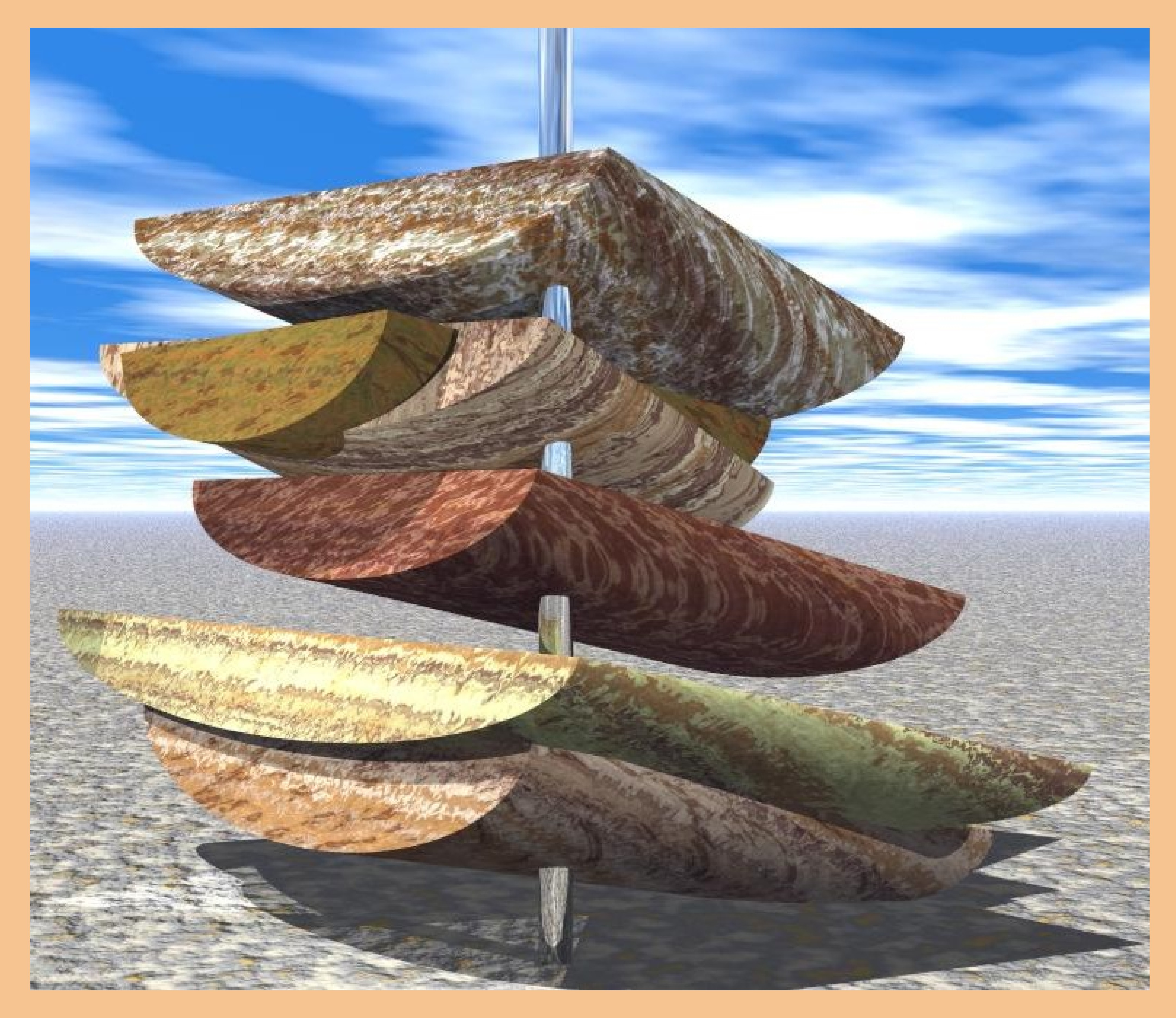

Analysis of Cross-bedded Structures from Image Logs
Conventional analysis of FMI images for the determination of palaeoflow direction involves the fitting of sinusoidal curves to FMI homo-resistivity intersection curves. This analysis assumes that the sedimentary features are planar. However, if trough-bedding occurs in the section, the conventional technique can result in large errors in palaeoflow direction due to the unknown offset between the borehole axis and the trough axis. This effect is conventionally accounted for by taking the vector mean of a large set of azimuthal determinations from a depth interval of typically greater than 30 m, and assuming that the errors cancel themselves out. This results in low vertical depth resolutions.
 With
plane bedding the actual azimuth of the bed coincides with the azimuth of
the minimum in the intersection curve. For trough bedding this is not the
case. We have created a method of finding the actual azimuth from the intersection
curve that also provides the degree of curvature of the trough and the position
of the borehole from its axis.
With
plane bedding the actual azimuth of the bed coincides with the azimuth of
the minimum in the intersection curve. For trough bedding this is not the
case. We have created a method of finding the actual azimuth from the intersection
curve that also provides the degree of curvature of the trough and the position
of the borehole from its axis.
We have developed an analytical model describing the intersection curves that result from the intersection of a vertical borehole with a mathematically generalized trough cross-bedded structure. Analysis of the new model shows deviations from sinusoidal behaviour that increases as the dip and the width of the trough decreases, and as the intersection offset between the borehole axis and the trough axis increases. The deviations imply that if a sinusoidal curve is blindly fitted to trough cross-bedded data, as currently commonly occurs, the dip can be overestimated by as much as 40 degrees, and the azimuth can be in error by 90 degrees.
 The
new method would allow individual trough-like structures to be mapped in the
subsurface in 3D.
The
new method would allow individual trough-like structures to be mapped in the
subsurface in 3D.
The conventional technique and the new model have been compared to 39 intersection curves from mixed plane cross-bedded and trough cross-bedded FMI data using non-linear fitting and a using range of statistical fitting tests. We have shown that the new technique provides an enhanced analytical capability characterized by (i) greatly improved accuracy in dip and azimuthal determinations, (ii) additional information concerning the width of the trough and the offset of the borehole axis from the trough axis, and (iii) enhanced vertical resolution arising because accurate directional data can be obtained from individual intersection curves. This information enables each trough bedded structure to be accurately and uniquely mapped in three dimensions in the sub-surface.
Bibliography
Glover, P.W.J., & P. Bormann, The characterization of trough and planar cross-bedding from borehole image logs, J. Appl. Geophys., 62(2), 178-191, 2007. [pdf]
Bormann, P. & Glover, P.W.J., The characterization of trough-bedded sedimentary structures and palaeoflow direction from down-hole FMI images, 25th General Assembly of the European Geophysical Society Nice, France, 25-29th April, 2000. [pdf]
Glover, P.W.J. & Bormann, P., The characterization of trough and planar cross-bedding from borehole image logs. , GAC-MAC-SEG-SGA 2006, Abstract No. 761, 14-17 May 2006. [pdf]
Glover, P.W.J. & Bormann, P., The characterization of trough and planar cross-bedding from borehole image logs, Poster, EGU 2007, EGU06-A-10472, 15-20 April 2007. [pdf]
© Copyright, Paul Glover 2008: Last updated 14/11/2008